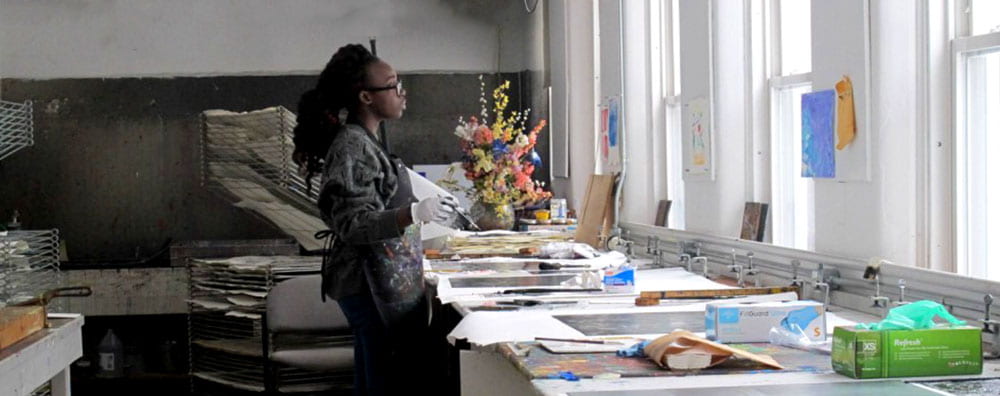Digital Imaging
Visual Ideas produced with the computer are the basis for Digital Imaging in the Department of Art and Art History. The concentration includes courses that investigate typography as an art form, desktop publishing, etching, screenprinting and web site animation. The essential quality that links these courses is computer software. Digital Imaging considers the computer to be an essential tool on an artist’s palette, and defines the concentration broadly to accommodate interests as diverse as traditional media and page design. Ideas that begin with the computer may become large scale drawings and drawings may turn into etchings and screenprints after translation by the computer.
All courses have many demonstrations, discussions and critiques, since each course creates ideas against a background of dialogue and technique. Students develop a personal opinion by discussing their images in class with their peers and producing increasingly sophisticated ideas. This participation in an artist community extends to the annual faculty review, which offers an opportunity to present opinions and artwork to the entire Department. This effort culminates in the capstone experience for Studio Art, the senior exhibition. Students concentrating in Digital Imaging will enroll in ART 498 Digital Imaging Thesis, and prepare a thesis and mature portfolio of artwork that will result in a Gallery exhibition and publication in the Department’s Art Journal.
In addition to Digital Imaging courses, students will take 15 credit hours in foundation study, 12 credit hours in Art History and the remaining credits in studio electives, one of which will be in a 3-D medium.
The Department also offers a Minor course of study in Studio Art consisting of 21 credits.
Digital Imaging is located in Hunt/Cavanagh Hall and all equipment is professional quality. In addition to a computer lab with the latest imaging software, we have a computer-controlled platemaker for Etching and a similar machine for screenprinting.
Studio Art
Department of Art & Art History
Hunt-Cavanagh Hall
401.865.2401
401.865.2410
art@providence.edu
Paul Crenshaw, Ph.D.
Department Chair
401.865.2296
paul.crenshaw@providence.edu
Lynn Curtis, M.F.A.
Assistant Chair
401.865.2018
lcurtis@providence.edu
Kate McNamara, M.A.
Visual Resource Curator
401.865.1042
kmcnam12@providence.edu
Janice M.DiLustro
Administrative Coordinator
401.865.2401
jdilustr@providence.edu






